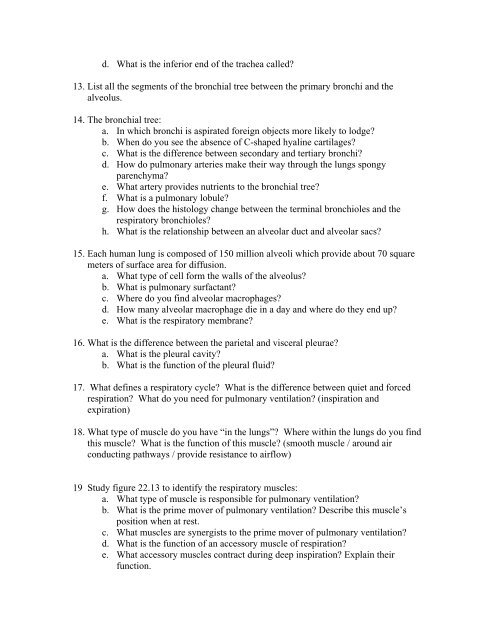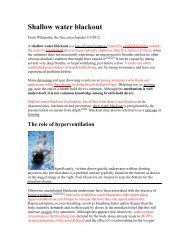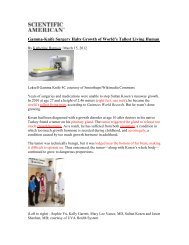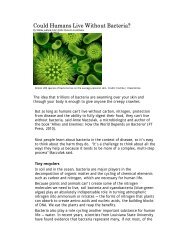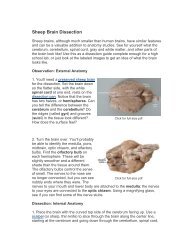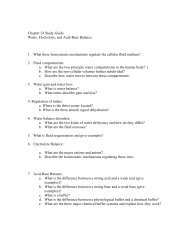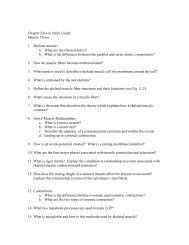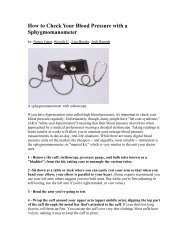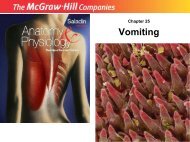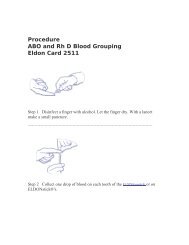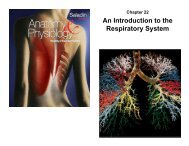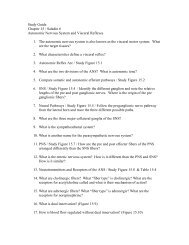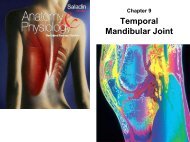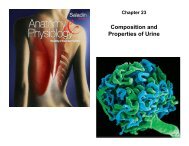C22 - Respiratory System
C22 - Respiratory System
C22 - Respiratory System
- No tags were found...
Create successful ePaper yourself
Turn your PDF publications into a flip-book with our unique Google optimized e-Paper software.
d. What is the inferior end of the trachea called?<br />
13. List all the segments of the bronchial tree between the primary bronchi and the<br />
alveolus.<br />
14. The bronchial tree:<br />
a. In which bronchi is aspirated foreign objects more likely to lodge?<br />
b. When do you see the absence of C-shaped hyaline cartilages?<br />
c. What is the difference between secondary and tertiary bronchi?<br />
d. How do pulmonary arteries make their way through the lungs spongy<br />
parenchyma?<br />
e. What artery provides nutrients to the bronchial tree?<br />
f. What is a pulmonary lobule?<br />
g. How does the histology change between the terminal bronchioles and the<br />
respiratory bronchioles?<br />
h. What is the relationship between an alveolar duct and alveolar sacs?<br />
15. Each human lung is composed of 150 million alveoli which provide about 70 square<br />
meters of surface area for diffusion.<br />
a. What type of cell form the walls of the alveolus?<br />
b. What is pulmonary surfactant?<br />
c. Where do you find alveolar macrophages?<br />
d. How many alveolar macrophage die in a day and where do they end up?<br />
e. What is the respiratory membrane?<br />
16. What is the difference between the parietal and visceral pleurae?<br />
a. What is the pleural cavity?<br />
b. What is the function of the pleural fluid?<br />
17. What defines a respiratory cycle? What is the difference between quiet and forced<br />
respiration? What do you need for pulmonary ventilation? (inspiration and<br />
expiration)<br />
18. What type of muscle do you have “in the lungs”? Where within the lungs do you find<br />
this muscle? What is the function of this muscle? (smooth muscle / around air<br />
conducting pathways / provide resistance to airflow)<br />
19 Study figure 22.13 to identify the respiratory muscles:<br />
a. What type of muscle is responsible for pulmonary ventilation?<br />
b. What is the prime mover of pulmonary ventilation? Describe this muscle’s<br />
position when at rest.<br />
c. What muscles are synergists to the prime mover of pulmonary ventilation?<br />
d. What is the function of an accessory muscle of respiration?<br />
e. What accessory muscles contract during deep inspiration? Explain their<br />
function.


